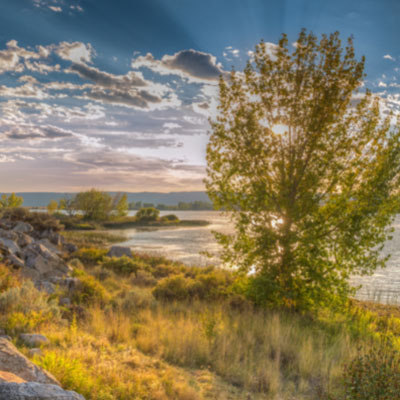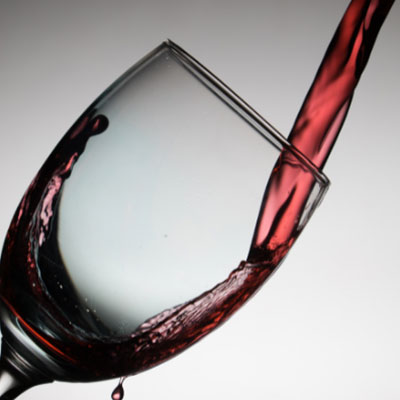Moving to Washington State: Discover the Evergreen State
We created this guide for moving to Washington State to help those who are in their very early stages of researching where they’d like to move. So, what exactly do you need to know before moving to Washington?
We’ve compiled some of the most important items you should consider when making this big decision. According to 2020 Census data, Washington was one of the top ten fastest growing states of the last decade in terms of population, with a massive 14.6% growth in population. So, is Washington the right state for you to move?
What You Need to Know about Washington’s Geography

Washington is the northwesternmost state of the contiguous United States with the Pacific Ocean to the west, Oregon to the south, Idaho to the east, and the Canadian province of British Columbia to the north. Fun fact: this state is often called Washington State to differentiate it from Washington, D.C. – and both were named after the country’s first president, George Washington!
If you love exploring the outdoors, it may be right for you to seriously consider moving to Washington. In fact, with an area of 71,362 square miles, Washington has several distinct geographic and climate regions within its borders.
In fact, the north-south running Cascade Range of high mountains bisect the state. On the western side of the mountains, referred to as the “West side,” the “Wet side,” or “Timberland,” Washington supports dense forests and areas of temperate rainforest such as the Hoh Rainforest.
Eastern Washington, called the “East side,” the “Dry side,” or “Wheatland,” includes areas of semiarid steppe and a few truly arid deserts in the rain shadow of the Cascades. You’ll find the Okanogan Highlands and the rugged Kettle River Range and the Selkirk Mountains covering must of the state’s northeastern quadrant.
From Mt. Rainier National Park to Olympic National Park and North Cascades National Park, Washington State has a lot of incredible nature to behold. (There are also lots of interesting museums around the state, including the Seattle Art Museum, the National Nordic Museum, and the Whale Museum, to name a few!)
Washington’s highest point, Mount Rainier, a large active stratovolcano in the Cascade Range, stands at 14,411 ft tall. By comparison, Washington’s lowest point found in the Pacific Ocean, and that’s sea level! Both sides of Washington offer interesting geography, with Puget Sound, Mount St. Helens, and Mount Baker-Snoqualmie National Forest as sights not to miss.
Moving to Washington Guide on the Weather in Washington

Washington’s climate varies widely depending on the season and where in the state you live. It may surprise you to learn that western Washington has a mostly Mediterranean climate, with mild temperatures and wet winters, autumns and springs, and relatively dry summers. Eastern Washington, on the other hand, has a relatively dry climate. In fact, rainfall in Washington varies dramatically going from east to west because of the Cascade Mountains.
This just means monthly normal high and low temperatures really depend on where you live. The average annual temperature ranges from fifty-one degrees on the Pacific coast to forty degrees in the northeast. Western Washington is known for its mild climate, considerable fog, frequent cloud cover, long-lasting drizzles in the winter and warm, temperate summers.
The eastern region, which does not benefit from the general moderating effect of the Pacific Ocean, occasionally experiences extreme climate. Arctic cold fronts in the winter and heat waves in the summer are not uncommon. Generally, summer temperatures tend to stay between highs in the seventies to lows in the forties and winter temperatures usually fall between highs in the forties and lows in the twenties.
The state has dangers associated with heavy rains which may lead to icy conditions which should be something to consider if you plan to build a home after moving to Washington.
Moving to Washington Guide on Getting a Job in the Evergreen State

If you’re looking for a place to grow your career, consider moving to Washington State! According to the state’s Employment Security Department’s website, at the time of authoring this article, the state of Washington has seen a steady job growth rate compared to the rest of the United States.
Moreover, in 2021, Washington employers were adding jobs back quickly as compared to 2020!Washington continues to add more jobs, resulting in a steady unemployment rate of around 5.1%. Industries showing solid job gains included government, real estate and rental leasing, and information technology.
What’s the situation on buying alcohol in Washington?

Who isn’t curious about how to toast moving to a new state! In Washington, a person must be twenty-one to buy or consume alcohol and it is illegal to drive with a blood alcohol level over 0.08%.
Interestingly, the law allows liquor to be sold, served, and consumed between 6 a.m. and 2 a.m., seven days a week. After 2 a.m., no one may have, consume, or be served alcohol at a licensed premises. Important fact: It’s a violation of Washington alcohol laws to operate a vessel while under the influence of alcohol!
What is there to do in Washington?

Hopefully you like being outside! Washington’s nickname, the Evergreen State, references the forests across the state that are full of evergreen trees and the abundance of rain that keeps the shrubbery and grasses green throughout the year. This is fitting as residents love spending their free time engaged in outdoor activities.
In addition to outdoor adventures, the state has a rich cultural history that mixes the original traditions American Indian Nations with that of immigrants from east Asian countries to create a unique identity that is celebrated across the state today. Another choice for entertainment is to head over to the state capital of Olympia or Seattle for culture, food, and fun.
Both are big cities, and they boast a variety of fun and interesting things to do including the vibrant theater scene in Olympia and the Seattle Opera in Seattle. However, if you’re like us, we’re sure you’ll agree that outdoor Washington is the best. You’ll be in awe each and everything you step outside!
Important State Symbols in Washington

The state of Washington has almost thirty official state symbols; we’ve included a few of our favorites here. The first, and most important, is the state’s name. What is now Washington was inhabited for thousands of years by various Native American tribes, including the Cayuse, the Nez Perce, the Chinook, Lummi, and the Salish.
When the territory became a state, it was named after George Washington, the nation’s first president! The state fruit is the apple, and the flower is the Coast Rhododendron. Another one of our favorite Washington symbols is the state fish: the Steelhead Trout. Probably the most unexpected state symbol is the state ship – the Lady Washington!
Lesser-Known FAQs About Moving to Washington
Q: What is the capital of Washington?
A: The capital of Washington is Olympia. Olympia is the capital of the state and the county seat of Thurston County. It is only about sixty miles southwest of Seattle, the largest city in the state, and about thirty-one miles southeast of Tacoma, another of Washington’s largest cities. Olympia gets its name from the Olympic Mountains to the northwest. If you plan to move to Washington, you’ll probably find yourself in this metropolitan region!
Q: How do Washington’s public schools rank nationally?
A: According to a study by US News, Washington public high schools rank 14/50 in a national breakdown tracking state-by-state high school performance. While education quality can vary widely depending on where in the state you live, this report takes the weighted average of the state’s high school performance into consideration. This seems like a solid ranking to us!
Q: What kind of taxes can you expect to pay in Washington?
A: Washington’s base sales tax rate is 6.5%, but since cities and counties collect added sales taxes on top of that rate, with rates typically at least 8%, and sometimes higher than 10%. The property tax rates are below the national average of 1.07%. More specifically, the state’s average effective tax rate is 0.93%. Finally, Washington State does not have a personal or corporate income tax.
Q: What’s it like to vote in Washington?
A: Washington State encourages every eligible person to register to vote and take part fully in all elections. To register to vote, you must be a citizen of the U.S.; a legal resident of Washington State; and at least eighteen years old by Election Day. You must prove your voting residency address at least 30 days before Election Day. You may specify a mailing address that is different from your residential address. You must not be disqualified from voting due to a court order or under Department of Corrections supervision for a Washington felony conviction.
Q: What are the rules for switching your driver’s license after moving to Washington?
A: To get a Washington driver’s license as a formerly out-of-state resident you’ll have to go to a Washington Department of Licensing office in person to apply. Unfortunately, you can’t do a Washington Department of Motor Vehicles change of address online or over the phone, however, you may be eligible to pre-apply online.
Expect that Washington driver’s licenses for new residents to the state are only available to those who do not have any outstanding suspensions, revocations, or cancellations on their out of state driver’s license and who have not been previously deemed unfit or unsafe to drive. You’ll also need to bring your proof of identity, your current out of state driver’s license, and your social security card. There is a fee to get a new license, so be prepared to pay that!
Q: When do you need to update your car plates after moving to Washington?
A: You’ll need to head to a Washington Department of Motor Vehicles office in person to update your vehicle’s registration. Make sure to bring along the following required documents: Vehicle Title Application (Form 420001); your current out of state title; an odometer disclosure statement; an emissions testing report; the bill of sale or dealer purchase agreement; and payment for fees. Car insurance is not needed when registering a vehicle in Washington, but it is mandatory when you are operating the vehicle already.
Q: What’s it like driving in Washington?
A: Like most state, the driving conditions in Washington are very different in urban and rural areas. Washington ranked at number 33 in a tie with Wisconsin as the state with the worst drivers in America. Now, that doesn’t mean Washington drivers are perfect – it just means you can’t just look out the window at the scenic countryside!
Q: Does Washington have any walkable cities?
A: All Washingtonians are pedestrians at one time or another – to get to work, for recreation, as part of events and tours, and children may even walk to school. In fact, most trips that people make every day are short enough to be done by foot or wheelchair. Most major cities in the state have public transportation infrastructure to help you get to where you need to go, too. In Seattle, there is even a thriving bike culture!
Is Washington the Right State for You to Move?




